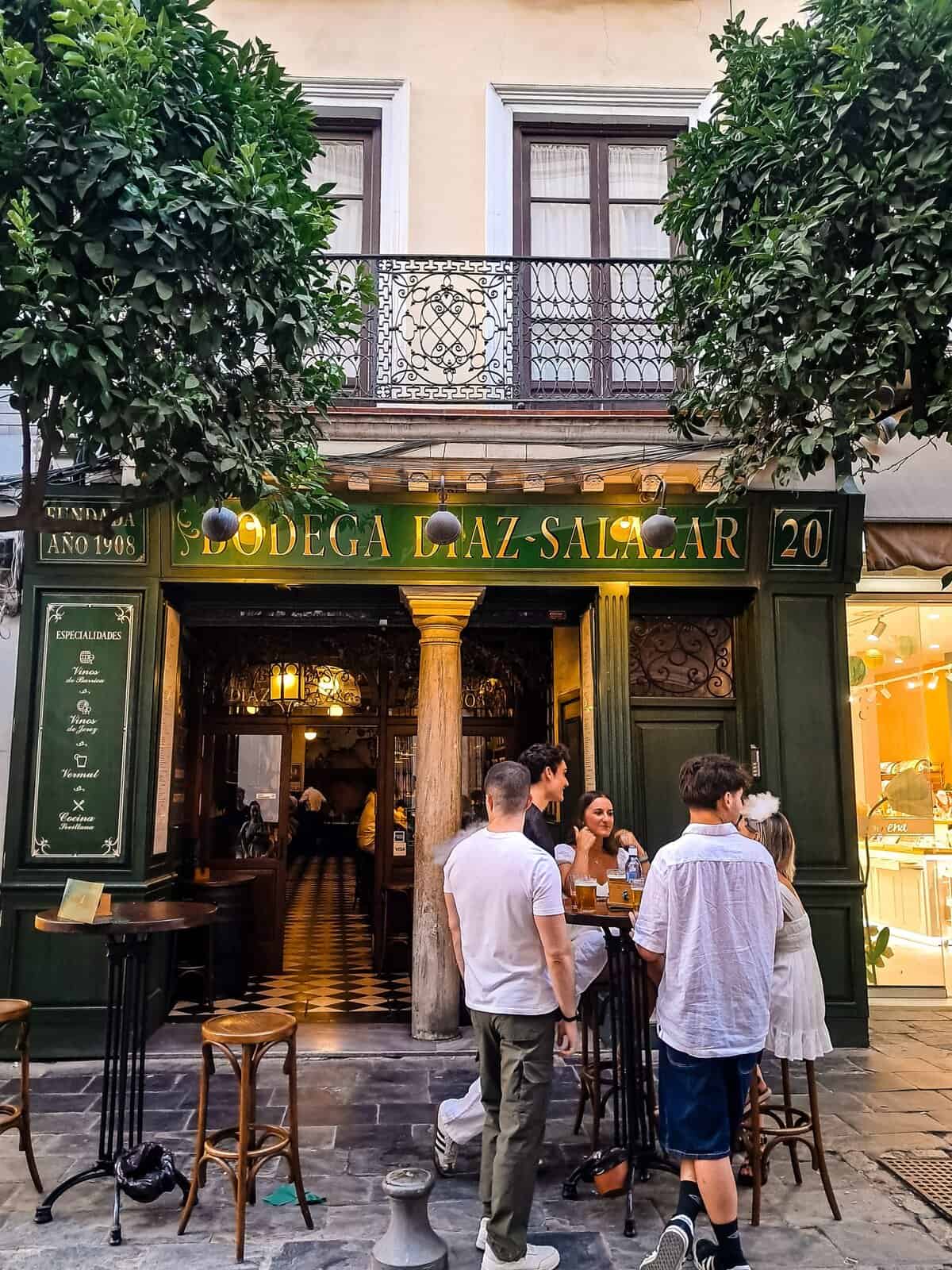Spain is known for its food and it has different regions and cities, which are more known than others for its cuisine.
Seville is one of those places. Foodies travel there just to explore its food scene. A big focus are the tapas and these offer a great chance to explore the city, while enjoying delicious local food.
Tapas in Seville are a beloved culinary tradition consisting of small, flavorful dishes often served alongside drinks in a social setting. Originating in Andalusia, tapas combine local, fresh ingredients with bold flavors that reflect the region’s rich cultural history.
Classic Sevillian tapas include specialties such as salmorejo (a creamy, thicker version of gazpacho topped with ham and egg), espinacas con garbanzos (spinach and chickpeas with garlic and olive oil), choco fritos (fried cuttlefish), and pringá (a meat sandwich).
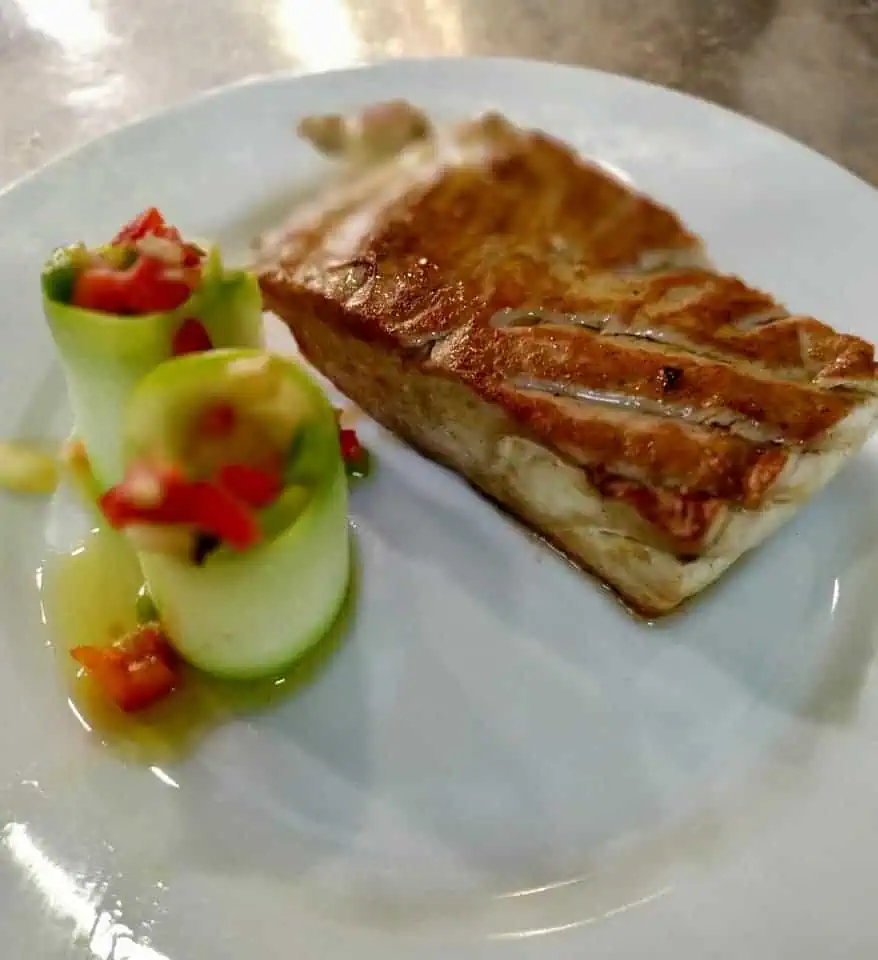
The tapas culture in Seville is more than just food; it’s a lively, communal experience known as “tapear,” where people gather in traditional bars to share plates, stories, and local wines or vermouth. This tradition, rooted in centuries-old history and legends, is a must-experience for visitors looking to taste authentic Andalusian flavors and soak up the city’s vibrant atmosphere.
To try tapas, you’ll find plenty of options. Some are tourist traps, some tougher to find and some are close to major sights and you might consider them as a tourist trap, though they are not. With a lot of research you might find your own options, but you would still miss out on a lot of background information.
That’s where a food tour comes in handy. They know their foodie scene and what each place is known for. Plus they can provide you with all the necessary background information.
One good example is the Jamon Iberico. If you just stop in a random bar, you usually see the ham hanging down from the ceiling. Some will find that view inviting, others maybe not. When looking into the menu, you will find huge price differences. Why is that, though it’s all sold as Jamon Iberico? Well, it’s the quality of the meat and actually also on how the pig lived its life before. See the extra section about the Iberian ham further below.
Seville is a city where history, culture, and gastronomy entwine seamlessly, and few experiences capture this better than the Tapas & History Food Tour by Devour. This tour is a vibrant journey through authentic Andalusian flavors paired with fascinating local stories, offering a genuine taste of Seville’s culinary heritage in some of the city’s most beloved traditional spots.
Four Iconic Stops, Four Unique Flavors of Seville
The places included on a food tour can always change slightly. Ours took place in the August summer heat, when some places might prefer to close for the holidays, which I don’t blame them for.
However, this is no problem for expert guides, especially in Seville, where there are plenty of good options. Nevertheless, it’s good to have a local expert to choose those places, as they know exactly what to eat where and what makes each place unique.
Here are a few places that we visited on our tour, along with a few other recommendations.
Las Teresas
Stepping into Las Teresas is like entering a living museum of Sevillian tradition. Dating back to 1870, this classic tapas bar in the heart of Santa Cruz charms with its rustic ambiance. Imagine walls adorned with hanging hams, vintage photos, and traditional tiled decor. Savor renowned specialties like jamón ibérico de bellota and the timeless spinach with chickpeas.
Expect a warm, welcoming staff and the authenticity that fills every corner, making it an essential first stop on the tour to immerse in real Sevillian tapas culture.
Address: C. Sta. Teresa, 2, Casco Antiguo, 41004 Sevilla

Bodega Díaz Salazar
A neighborhood treasure, Bodega Díaz Salazar stands out for its timeless charm and welcoming atmosphere. Known for its house-made fortified wines and vermouth served straight from the barrel, this bodega pairs excellent drinks with delightful cured meats, cheeses, and pickled snacks.
The personable service here adds to the experience, with the friendliness of the staff, especially José Luis, who makes all guests feel at home. Its lively, authentic vibe and great value make it a beloved local hangout as well as a favorite for travelers seeking genuine Andalusian hospitality.
Address: C. García de Vinuesa, 20, Casco Antiguo, 41001 Sevilla
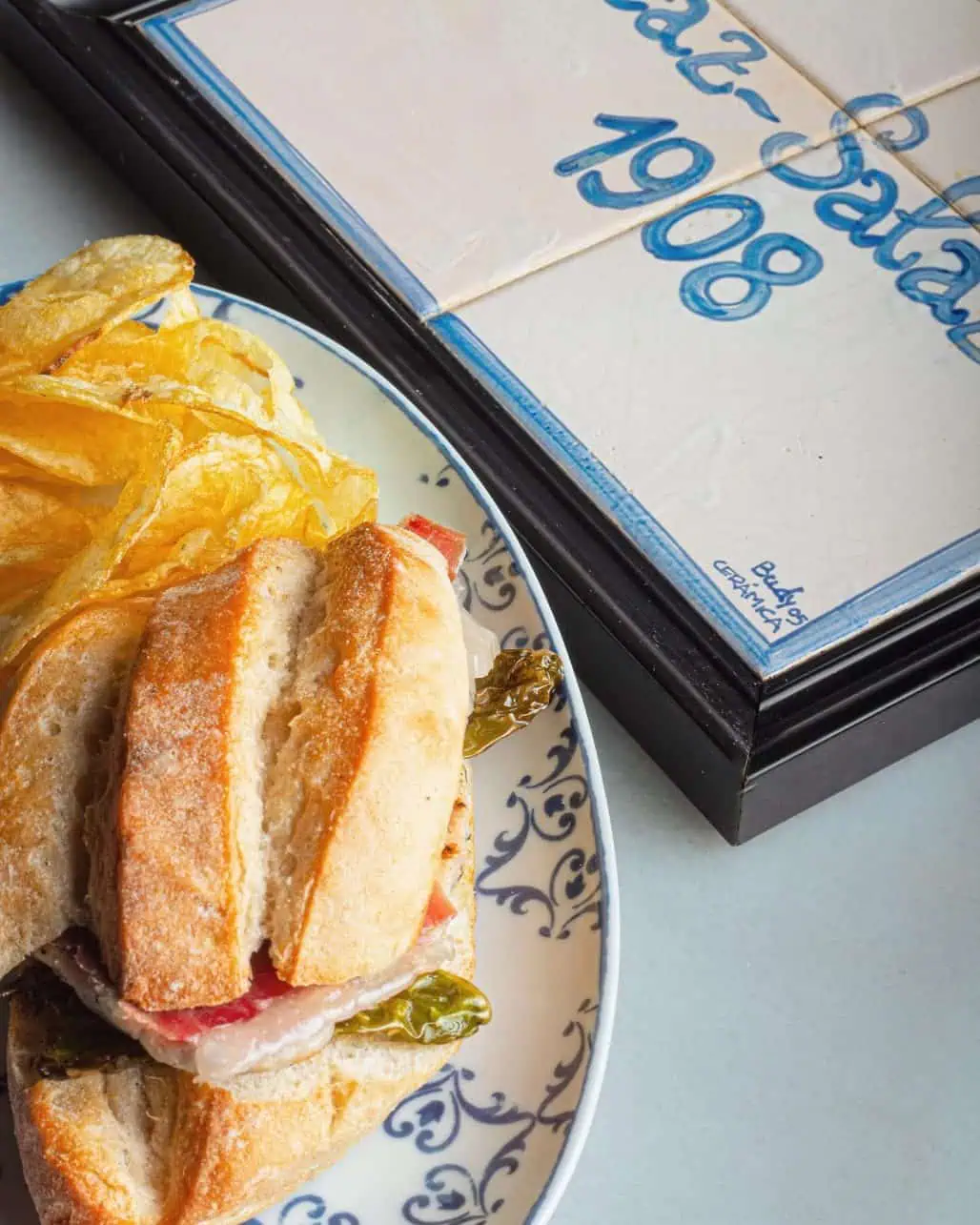
Restaurante El Atún
For lovers of seafood and Andalusian classics, Restaurante El Atún brings fresh, hearty flavors to the table. The restaurant is celebrated for specialties centered on tuna and other seafood, with standout dishes including vegetarian paella and fried fish platters.
Enjoy the casual, friendly atmosphere enhanced by outdoor seating on a bustling street. Highlights are the generous portions, accommodating staff, and the availability of gluten-free options, making it both a safe and savory choice for visitors eager to experience traditional flavors in a relaxed setting.
Address: C. Joaquín Guichot, 5, Casco Antiguo, 41001 Sevilla
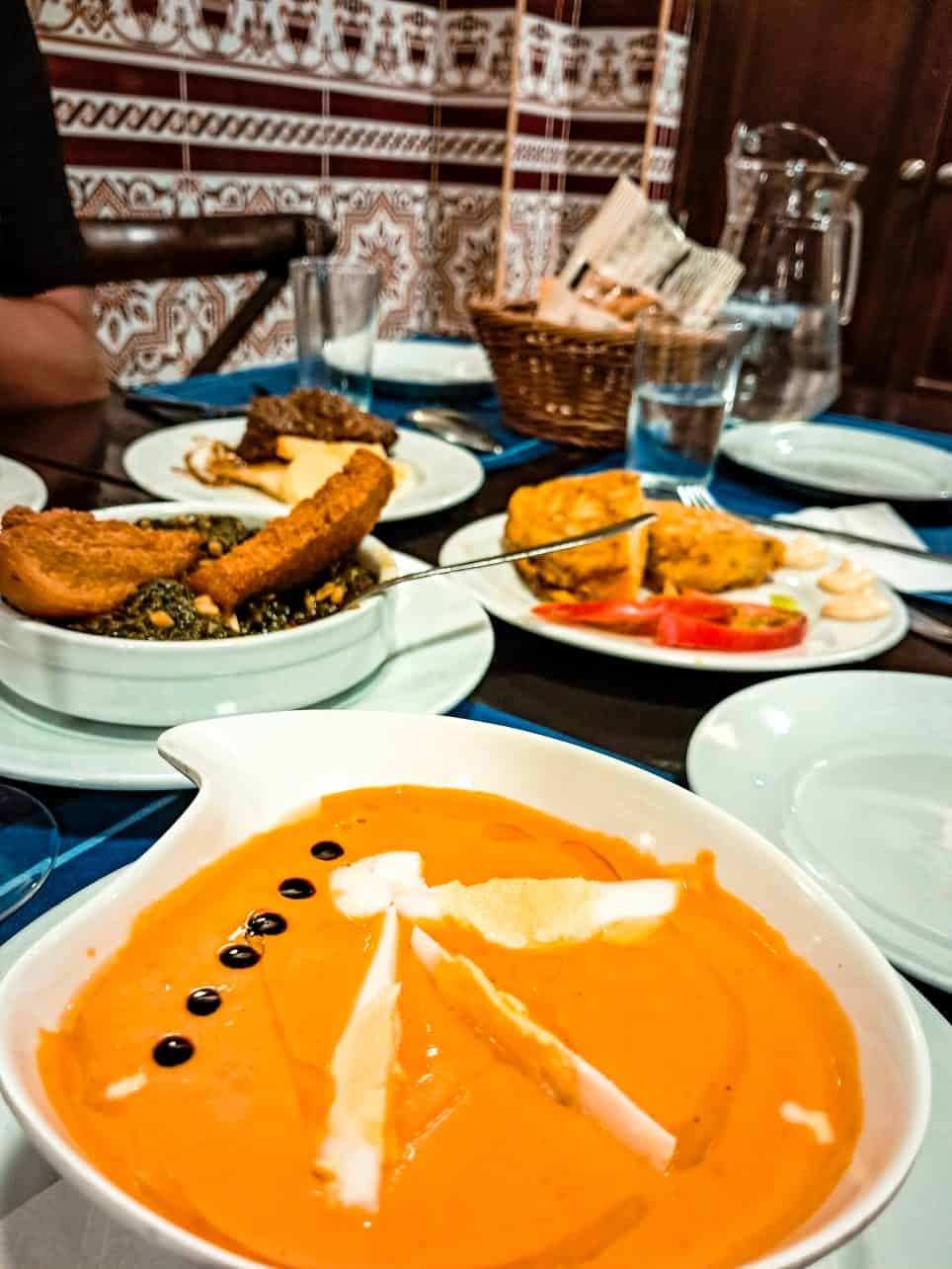
Olmo Heladería Artesanal
Rounding off the tour with sweetness, Olmo Heladería Artesanal is a must-visit for ice cream lovers, and those with dietary restrictions.
Famous for its extensive vegan and non-dairy options, Olmo offers an inventive mix of flavors from classics like chocolate and pistachio to exotic blends such as passionfruit, orange-ginger-cinnamon, and lemon-mint. I chose the chocolate with a dip of vanilla. It was outstanding.
The cozy shop delights guests with friendly service that often includes complimentary tastings, and the quality of the ice creams has earned it rave reviews for freshness and flavor intensity. I can only confirm those.
Visitors leave Olmo with smiles on their faces and satisfied palates, whether they’re vegan or traditionalists… unless the shop is closed late at night, that is!
Address: Cta. del Rosario, 1, Casco Antiguo, 41004 Sevilla
Bar Las Golondrinas – Antillano Campos
Located in the heart of Triana, Bar Las Golondrinas is an iconic neighborhood tapas bar renowned among locals and visitors for its bustling, authentic Sevillian flair.
The menu features standout dishes such as punta de solomillo (Iberian pork tenderloin), marinated mushrooms with herbed aioli, and perfectly cooked squid.
I highlight the simple, traditional flavors, quick and efficient service, and remarkable value for money. The bar’s welcoming, energetic atmosphere and classic décor make it a culinary staple. This is a top spot for those wanting a truly local tapas experience.
Address: C. Antillano Campos, 26, 41010 Sevilla
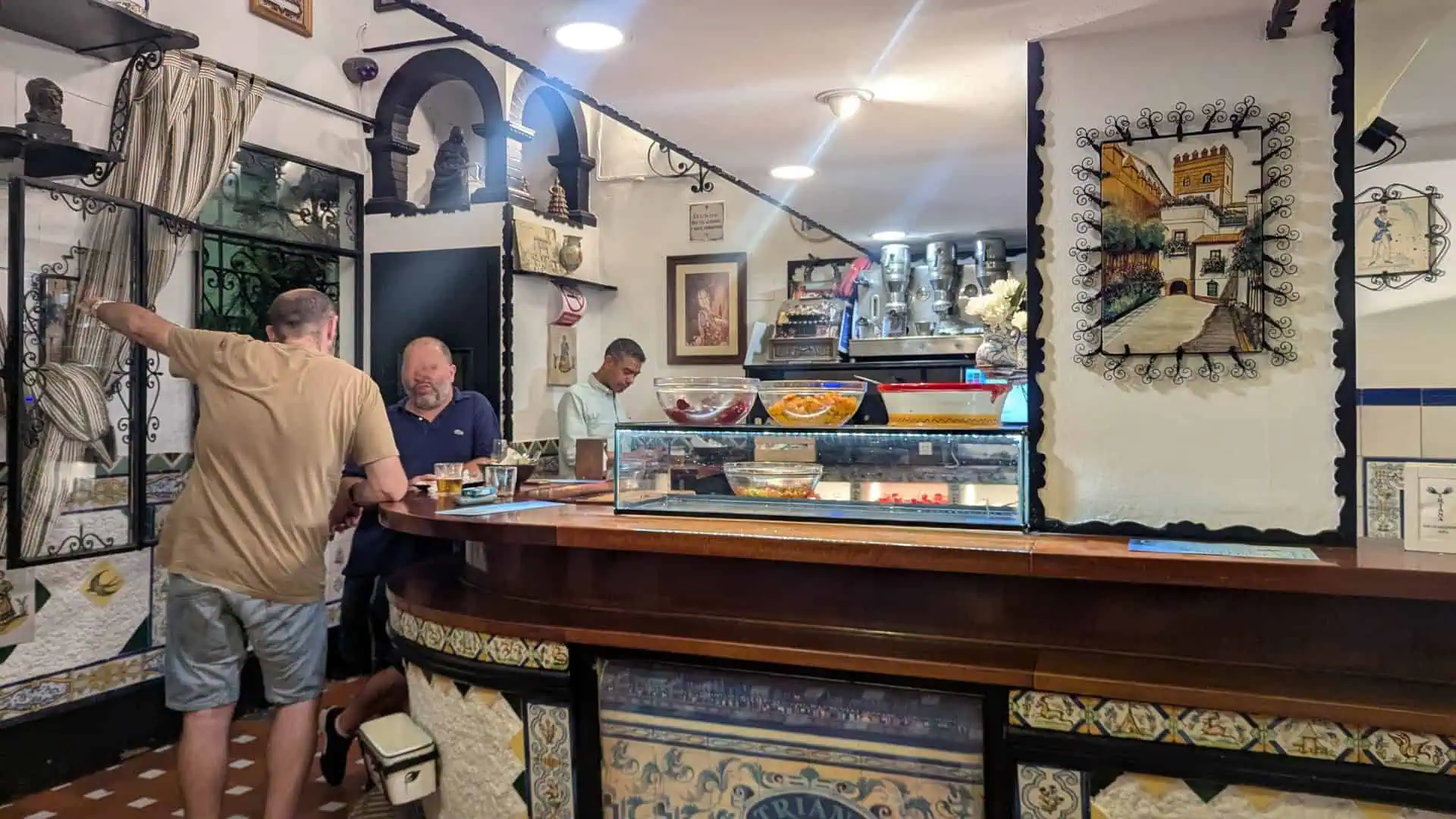
Alfarería 21 – Casa Montalván
Alfarería 21, housed in the historic Casa Montalván ceramics factory, fuses modern design with tradition through the preservation of original tiles and architectural features. Spread across multiple levels (including a rooftop terrace), it offers elegant yet lively surroundings.
The kitchen is celebrated for both innovative and classic tapas. Favorites include prawn and pecorino fritters, lamb skewers with lime-yogurt sauce, crispy calamari, and creative croquetas.
You will appreciate the attentive service, beautiful interiors, and the unique setting that reflects both Triana’s ceramic heritage and current culinary trends. The space stands out for its blend of local history, sophisticated ambiance, and high culinary standards, making it a favorite among those seeking a memorable tapas experience in Seville.
Address: C. Alfarería, 21, 41010 Sevilla

Bar Santa Ana
Bar Santa Ana is a beloved local gem lauded for its friendly staff, lively neighborhood vibe, and robust menu of classic Andalusian tapas.
Positioned beside a church and flamenco school, the bar features a cozy terrace and inviting interior, and is known for late-night hospitality and fair pricing.
We had generous portions, fresh ingredients, and a welcoming service. The atmosphere is known for its warmth, which makes you feel a bit of being part of a close-knit community. Updated ownership has brought a creative twist to traditional flavors, further enhancing the bar’s appeal as a go-to for both locals and newcomers.
Address: C. Pureza, 82, 41010 Sevilla
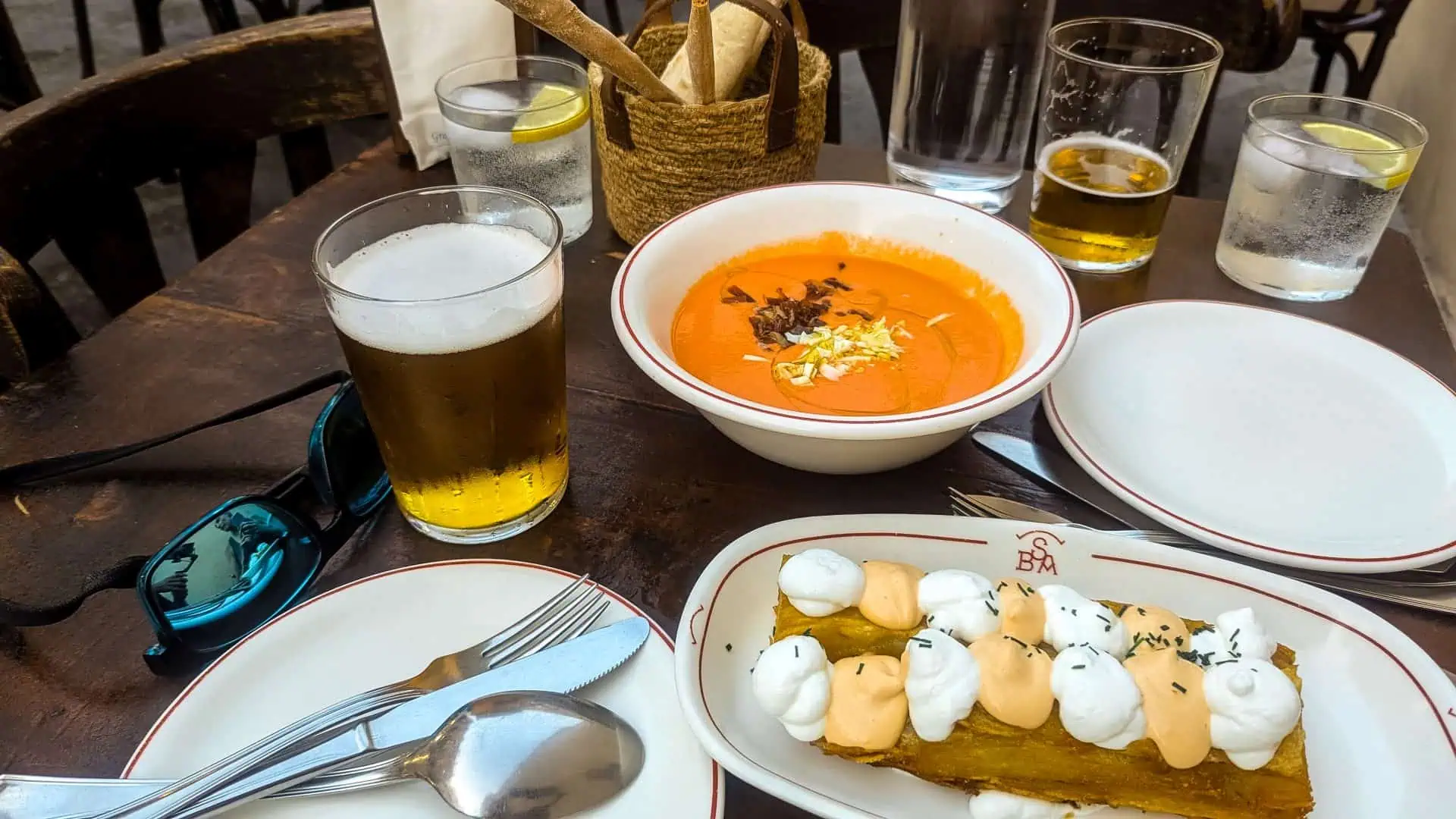
Mercado del Barranco
Mercado del Barranco offers a modern, spacious food market atmosphere right on the banks of the Guadalquivir River.
This historic iron structure has been transformed into a light-filled culinary center where visitors can sample a wide array of local and international fare: from Iberian cured meats, traditional tapas, and fried fish to bao buns and gourmet desserts.
The market stands out with its cleanliness, variety, and inviting ambiance, as well as the opportunity to dine al fresco with views of the river. The self-service model allows guests to create their own tasting experiences, making it an attractive spot for families and groups looking to sample the best of Seville all in one place.
Address: Casco Antiguo, C. Arjona, s/n, Casco Antiguo, 41001 Sevilla
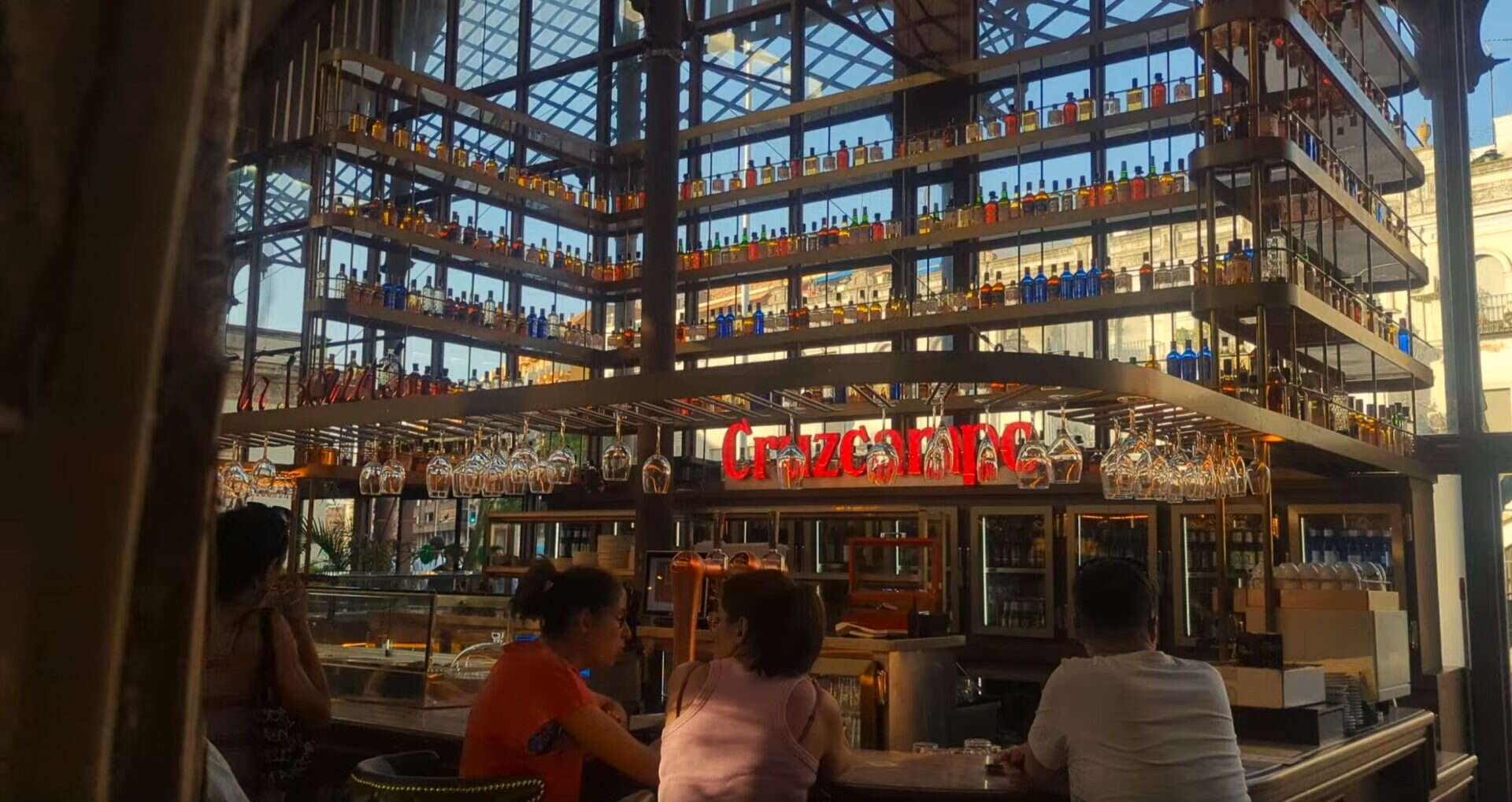
Ático Sevilla
Ático Sevilla is recognized for its stylish rooftop setting, offering panoramic views of the city’s skyline and a modern lounge ambiance.
The venue is particularly popular for its seasonal cocktails, upbeat music, and vibrant atmosphere, especially on weekends. The top highlight is definitely the spectacular vista and the quality of the drinks, making it a favored destination for both relaxing sunsets and energetic evening outings. The airy terrace provides a memorable backdrop for socializing, and while experiences with service can vary, the overall draw is the unbeatable location and lively rooftop setting that captures the spirit of contemporary Seville nightlife.
Each of these establishments contributes its own flavor and character to Seville’s dynamic food scene, offering diverse experiences from traditional neighborhood bars to innovative culinary spaces and rooftop escapes.
Address: C. Reyes Católicos, 25, Casco Antiguo, 41001 Sevilla
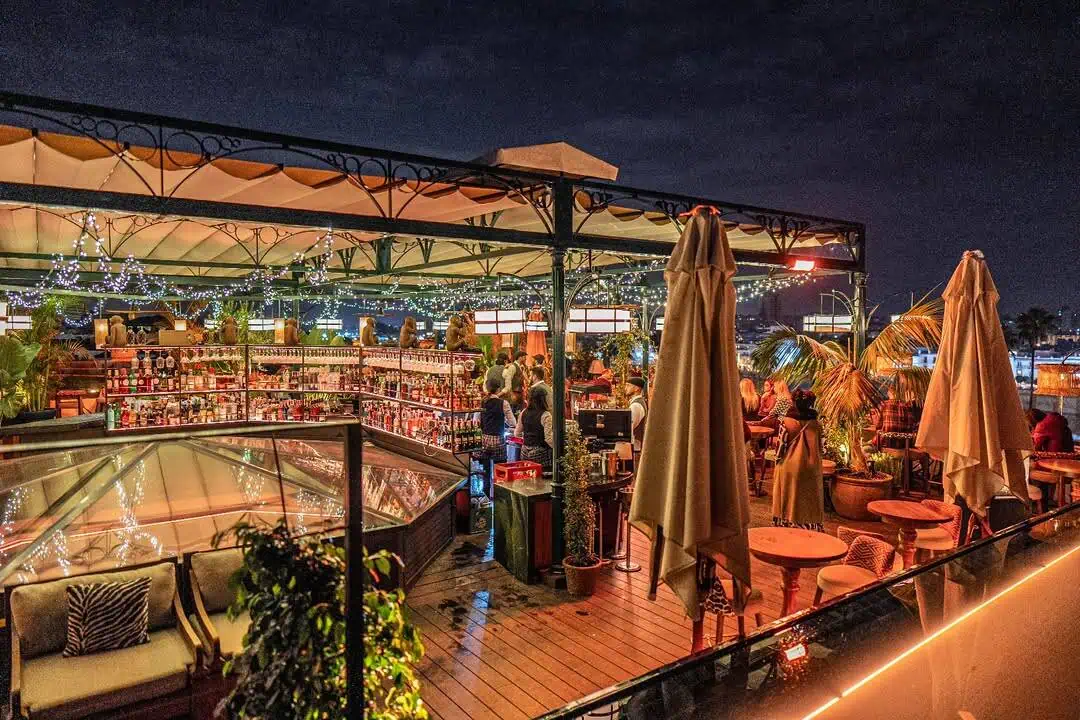
Why Choose Devour’s Tapas & History Food Tour?
Beyond the mouthwatering food, this tour provides a rich cultural experience, combining each bite with stories about Seville’s history, customs, and culinary traditions. The carefully curated stops each offer a window into local life, from centuries-old recipes and family-run establishments to modern adaptations rooted in tradition.
Whether it’s your first visit or a return trip, this tour promises an unforgettable, authentic journey into Seville’s gastronomic soul.
For travelers eager to explore Seville through its food, meet passionate locals, and savor timeless flavors, Devour’s Tapas & History Food Tour is an essential gateway to the city’s rich culinary tapestry.
Jamon Iberico
No matter if you join a food tour or if you explore the food scene by yourself. Most probably you want to taste the world famous “Jamon Iberico”. So let’s have a short info section on that one.
Finding the right place to try a good quality Jamon Iberico is possible, but the easiest and best way is to join a food tour. Let me tell you why. They know the places to go for. You won’t see the difference on the menu, as the price itself is not always the identifier for that. With the info here, you might be able to order it.
Iberian ham (Jamón Ibérico) is classified using a color-coded label system that indicates the quality, purity of the pig breed, diet, and production methods. This system helps consumers understand what they are purchasing.
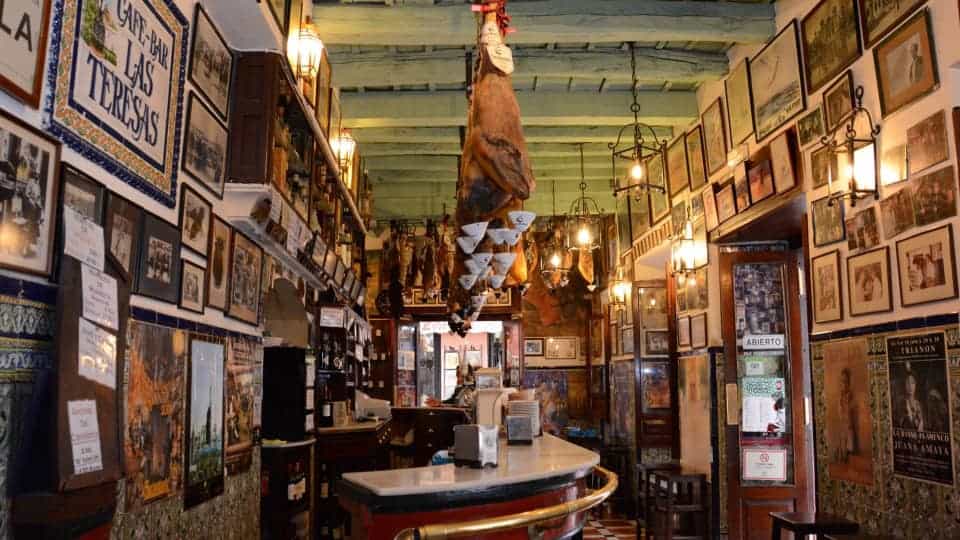
There are four main labels, each representing a distinct type of Jamón Ibérico:
- Black label (Jamon 100% Iberico de Bellota): This is the highest grade. It comes from purebred Iberian pigs (100% Iberian genetics) raised free-range and fed exclusively on acorns during the montanera season (autumn to winter). The ham is cured for an extended period (typically 36 months or more), resulting in intense flavor, rich marbling, and exceptional quality. It is also known as “Pata Negra” and is considered the finest Iberian ham.
- Red label (Jamon Ibérico de Bellota): This comes from Iberian pigs that are crossbred, with 50%-75% Iberian genetics. These pigs are also free-range and fed acorns during montanera, but the breed is not 100% pure Iberian. The quality and taste remain high, but it is considered a step below the black label.
- Green label (Jamon Ibérico de Cebo de Campo): Pigs producing this ham have at least 50% Iberian heritage and are raised free-range, but with a mixed diet of natural pasture/grasses and grain. The flavor is less intense than bellota varieties due to the grain diet but still offers balanced quality from outdoor rearing.
- White label (Jamon Ibérico de Cebo): This is the most basic Iberian ham category. The pigs (at least 50% Iberian) are raised indoors and fed exclusively on cereals and grains. This results in a milder flavor and less marbling compared to the acorn-fed varieties. It is the most affordable option among the labeled Iberian hams.
So the labels communicate the Iberian pig’s purity and diet: black and red labels indicate acorn-fed pigs (bellota), while green and white indicate grain or mixed feed. Black label (100% acorn-fed pure Iberian) is the top quality, and white label is the entry-level Iberian ham.
This labeling system was implemented by the Spanish government starting in 2014 to ensure transparency, quality control, and consumer protection in Iberian ham production.
So when buying Jamón Ibérico, the color seal on the ham indicates the breed purity and the pig’s diet, which directly influence the taste, texture, and price of this prized Spanish delicacy.


